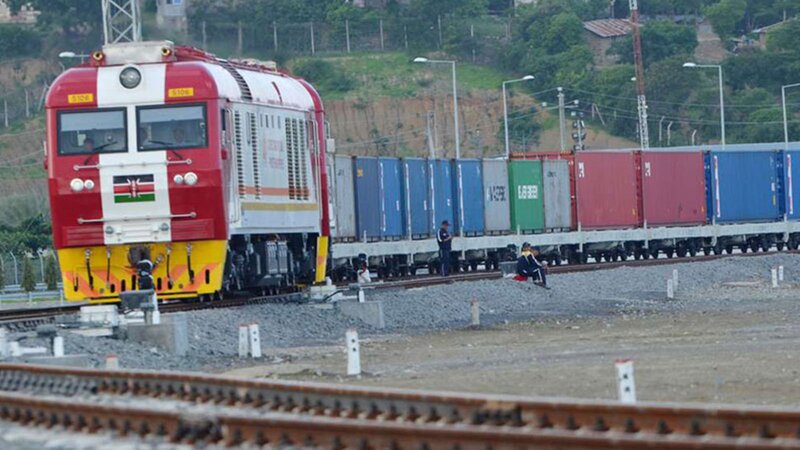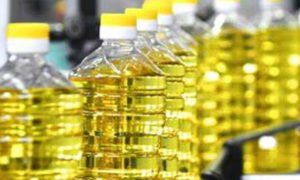Railways eyes edible oil, clinker to boost stagnating SGR cargo

The Kenya Railways Corporation has expanded the list of commodities transported on the Standard Gauge Railway (SGR) and increased wagons to boost cargo volumes, which grew only 1.62% in the year ending June 2024. Despite these efforts, challenges like delays and poor coordination have led some businesses to opt for road transport, impacting overall efficiency.
The Kenya Railways Corporation (KRC) has backed the expansion of the list of commodities transported on the standard gauge railway (SGR) to support the growth of volumes of cargo, which showed signs of flattening in the year ended June.
The State-owned railway manager says it recently added more “principal commodities” such as edible oil, cement clinker, and steel to the list of goods it moves on the SGR to sustain the growth of the freight business.
“We have added new principal commodities to our freight business. We have also increased the number of wagons.
“We expect this investment to help the cargo business to continue to climb this financial year [ending June 2025],” said KRC managing director Philip Mainga on the telephone.
The official spoke after its data showed that volumes of cargo moved on the SGR for the year ended June nearly flattened, rising a marginal 1.62 percent year-on-year to 6.4 million metric tonnes.
That was the slowest growth in the post-pandemic period, with volumes having grown at double-digit rates in the prior two years.
KRC acquired 300 additional train wagons for SGR freight service in the second half of the review fiscal year ended June 2024, raising the number to 1,900 wagons.
This came after businesses complained of frequent cargo delays at the Mombasa port because of an occasional lack of wagons, system downtime, and poor coordination amongst State agencies at the port.
“The challenge of reliability and availability of wagons has been sorted. We have also grown our train numbers to about 10 trains from eight,” said Mr Mainga.
Provisional data, collated by the Kenya National Bureau of Statistics, showed that volumes in the second half of the review period (January to June 2024) fell 4.26 percent to 3.05 million metric tonnes.
This was the first half-year fall in the post-pandemic period since a 1.89 percent year-on-year drop in the six months through June 2020.
Revenue from freight services was also flat in the second half of the year to June 2024, according to indicative data from KNBS, rising a measly 0.66 per cent to Sh6.70 billion.
The full year income from the SGR cargo business, however, rose 11.97 percent to an estimated Sh14.72 billion. The cargo business was the main economic justification for building the $3.6 billion (Sh 464.33billion).
The Kenya Association of Manufacturers (KAM), whose members are amongst the large importers through the Mombasa port, earlier in the year said delays in loading containers had prompted some firms to use road transportation.
“Delays due to unavailability or inadequate wagons for loading containerised cargo in readiness for railage from the Port of Mombasa to the Inland Container Depots (ICD) in Nairobi and Naivasha is costly to businesses,” KAM said in a report detailing its priority agenda for 2024.
“Delays can also emanate from unavailability of wagons due to slowed repair works of damaged wagons by KRC engineers or delayed procurement of new and additional wagons needed to increase the number of containers that each train can pull from the Port of Mombasa to ICD” the lobby added.
Delays and poor coordination amongst State agencies, the report suggested, had pushed up demurrage and storage costs for manufacturers.
Agencies that coordinate in clearance and movement of goods at the port of Mombasa are KRC, Kenya Ports Authority, Kenya Revenue Authority, Kenya Bureau of Standards, Kenya Plant Health Inspectorate Service , and Kenya Trade Network Agency.
“Most transporters of cargo that is destined for upcountry prefer to use the Through Bill of Lading (TBL) to avert cargo demurrage costs while using the Standard Gauge Rail as the TBL is a better option where rail transport is available and connecting the seaport to the mainland,” KAM said in its report.
“This is because, in the TBL import mode, the shipping line takes responsibility for transporting cargo to the destination, while in the Merchant Haulage Product (MHP) or the Non-TBL mode, the responsibility of the shipping line ends upon discharge of the container at the port” it added.
To read more about the news about the Edible Oil News continue reading Agriinsite.com
Source Link : https://www.businessdailyafrica.com/bd/economy/railways-eyes-edible-oil-clinker-to-boost-stagnating-sgr-cargo-4741238














